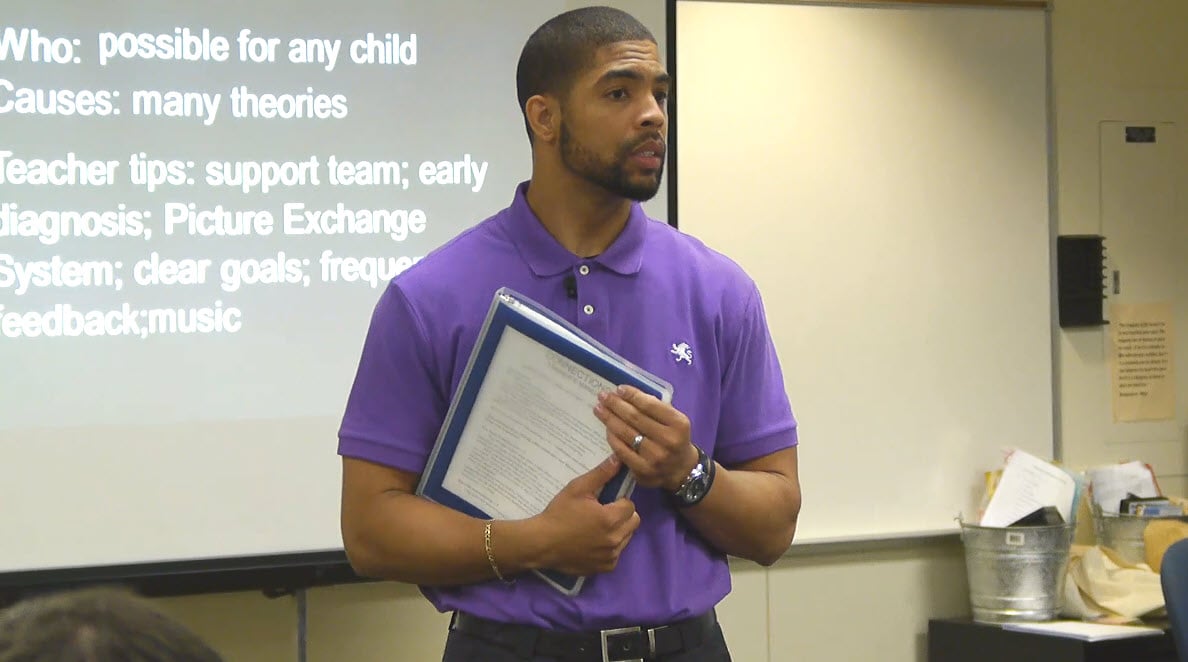



School districts across the state of Texas are facing severe teacher shortages and are scrambling to fill vacancies.
New data released by the Texas Education Agency (TEA) illustrates the dire situation. Nearly twice as many began teaching without a state teacher certification during the 2021-22 school year (8,435) than during the 2020-21 school year (4,652).
Under a program called Districts of Innovation, Texas allows districts to hire uncertified teachers. The legislation gives school districts more local control to meet their individual needs. One of the most popular ways districts have taken advantage of this law is by recruiting industry professionals to teach career and technical education courses. However, districts have the flexibility to hire uncertified teachers in other subjects and grade levels.
Educator preparation programs still remained another strong alternative route for aspiring teachers to earn their teaching credentials and enter the classroom, with more than 8,000 hires during the 2021-22 school year who received their intern certificate through an alternative certification or post-baccalaureate program.
As we head into the new year, there are a lot of questions being raised about whether educators entering the teaching profession are prepared, as well as how the state can best address the teacher shortage.
Here are three of our takeaways about Texas teaching credential programs' role and what you should know if you’re considering switching careers.
Let’s get straight to the point. If you’re considering changing your career direction and becoming an elementary school, middle school, or high school teacher, NOW is the time to pursue your license. School districts need you.
The Texas Education Agency, the state agency that oversees primary and secondary public education, collects data each year that shows how many teachers are employed and the attrition rate, which is a metric used to determine the pace at which employees leave a company or organization.
During the 2021-22 school year, the state experienced a11.57% attrition from the previous year. That number is up from the 9.34% rate during the 2020-21 school year, and the highest experienced in the last 15 years.
These numbers show that there are positions sitting open and not being filled. There are any number of reasons why this is occurring, but these important statistics show that school districts across the state are struggling to fill open positions.
The teacher shortage is especially felt in seven areas. Each year, the TEA submits a list of teacher shortage areas to the U.S. Department of Education. If the Department of Education approves this list, a certified teacher with certain types of student loans may qualify for partial loan forgiveness, deferment or cancellation.
For the 2022-23 school year, the U.S. Department of Education approved these seven shortage areas for Texas school districts:
Bilingual/English as a Second Language - Elementary and Secondary Levels
Special Education - Elementary and Secondary Levels
Career and Technical Education - Secondary Level
Technology Applications and Computer Science - Elementary and Secondary Levels
English Language Arts and Reading - Elementary and Secondary Levels
Mathematics - Secondary Level
Science - Secondary Level
It’s important to note that if you provide special education services to students, even if you do not have your own classroom, you can still qualify for student loan benefits. The role of a special education teacher is vast and includes services like:
Speech and language pathology and audiology
Physical therapy
Occupational therapy
Psychological and counseling services
Recreational therapy
To qualify for student loan benefits, the TEA states that you must:
Be licensed, certified or registered by the appropriate state education agency in the area you provide related special education services
Provide services that are part of the educational curriculum for children with disabilities or developmental delays
Even if it’s your goal to teach in a different grade level or subject area than the identified shortage areas above, there is still a significant need for teachers across the board. Now is the time to pursue your teaching license when school districts are actively looking for educators like you to fill these positions.
Texas needs help with filling teacher positions in key areas. In response, many school districts are hiring teachers who do not have their teaching certifications.
How is this possible when in order to teach, a candidate must have a bachelor’s degree, complete an educator preparation program, pass a criminal background check and pass all required exams? As we mentioned above, Texas has allowed districts to hire uncertified teachers since 2015 under a program called Districts of Innovation.
A Dallas Morning News report discovered that more than 800 out of over 1,000 school districts have the flexibility to hire non-certified individuals to teach in specific areas. When schools can’t fill these open positions, they often resort to using substitute teachers (also facing a shortage) or combining classes, increasing the student-to-teacher ratio.
School districts typically have three options to address emergency staffing levels:
School district teaching permit
General state certificate teacher waiver
State Board of Educator Certification (SBEC) emergency permit
A school district teaching permit allows a school district to employ someone who the district deems qualified. This person does not hold a teaching certificate, however, and can only teach in the district where the permit is issued. Individuals employed under this permit can only teach non core academic career and technical education (CTE) courses.
A general state certificate teacher waiver also allows a district to employ an individual who does not have the necessary certification requirements. This waiver is valid for one to three years, and can be used in situations where certified teachers wish to teach outside their certification area.
A SBEC emergency permit is for those seeking admission or enrolled in an educator preparation program but still need to fulfill the requirements for certification. This emergency teaching credential is valid for one year and is non-renewable.
While these options offer school districts more control over how they meet their staffing needs, many in the field of education have expressed concern that those entering the field of education using this pathway are unprepared for the challenges they will immediately face.
Enrolling in an educator preparation program helps ensure you are prepared to teach in a classroom. The best teacher training programs will work with you to determine the training you need based on the subject and grade level you want to teach.
Here are two important notes to keep in mind:
Note 1: Most interns who have a bachelor’s degree complete the certification process in just 4 to 6 months. The best Texas teacher certification program will be both efficient and comprehensive.
The required training will consist of online or in-person courses, or a combination of both. Your training includes:
A minimum of 300 hours of training to receive a standard teaching certificate
Of these 300 hours of training, 30 must be dedicated to observation by a teacher advisor or in a classroom environment working with students (student teaching)
The 30 hours of observation by a teacher advisor are a very important part of your certification process. These certified teachers send a recommendation to your credential program that you are ready or not ready to teach in a school district.
The educator preparation program you choose can make a significant difference during this process. ECAP has former principals, vice principals and teachers who have extensive experience to help you through this certification requirement. Not all programs do this. Some simply send past teachers who are ex-students of their program to evaluate you, so it is important to contact the program you are considering to ensure that you are going to get the best advisor to help you.
Note 2: If a school district secures an emergency teaching credential for you to teach in one of its schools, having a high-quality educator preparation program in your corner is critically important.
Your first year of teaching is typically a high-pressure situation, not only because you are embarking upon a new career, but because classroom teachers face unprecedented challenges right now. These include pressure to make up for lost instructional time during the pandemic to increased classroom sizes due to teacher shortages.
You will not only want, but need a quality certification program in your corner to support you as you navigate your first year in teaching.
While we’ve focused most of our thoughts from the teaching intern perspective, it’s important to take a closer look at how the relationship between a Texas teaching credential program and a school district can help solve teacher shortages as well.
It is the responsibility of a school district to secure the emergency certification. We encourage school districts or superintendents to work with educator preparation programs to identify interns who would best fulfill the duties of the teaching position.
If a prospective teacher has not yet enrolled in an educator preparation program, we encourage school districts to contact us to request a Deficiency Plan.
ECAP will verify a candidate’s eligibility, create the Deficiency Plan and return it to the district. The teacher will receive the same access to and types of support while holding an Emergency Permit via a Deficiency Plan from ECAP as the teacher would under an intern or probationary certificate.
Each candidate will be assigned an ECAP field supervisor from the same pool of supervisors who service our internship and probationary certificate holders.
Here’s why this is particularly important. Our alternative certification program has former principals, vice principals and teachers who have extensive experience in helping aspiring teachers through this process. This helps to ensure the teachers you hire are getting substantial support and guidance so that they are more likely to remain in the field and with your district.
Developing a relationship with an experienced and qualified educator preparation program like ECAP helps your district not only fill open positions but fill them with qualified candidates who are supported by quality teaching credential programs.
Topics: Becoming A Teacher
Micah is the Director of Curriculum & Technology. He holds a Bachelor of Arts in British Literature, from the University of North Texas and a Master of Arts in Teaching, from Louisiana College. In his previous career, Micah served for 14 years as a banker and bank manager. For the majority of this period, Micah managed the Downtown Fort Worth location of Frost Bank. In 2005, Micah finally surrendered to his true calling to be an educator. After a brief, but fulfilling term teaching high school English at Flower Mound High School in Lewisville ISD, Micah went to work for the family business, training teachers.
7166 Baker Blvd., Suite B · Richland Hills, Texas 76118
Phone 817-284-7731 | Fax 817-284-3396
Login | Make Payment | ECAP Handbook | Privacy Policy | Pricing
YOUR COMMENTS